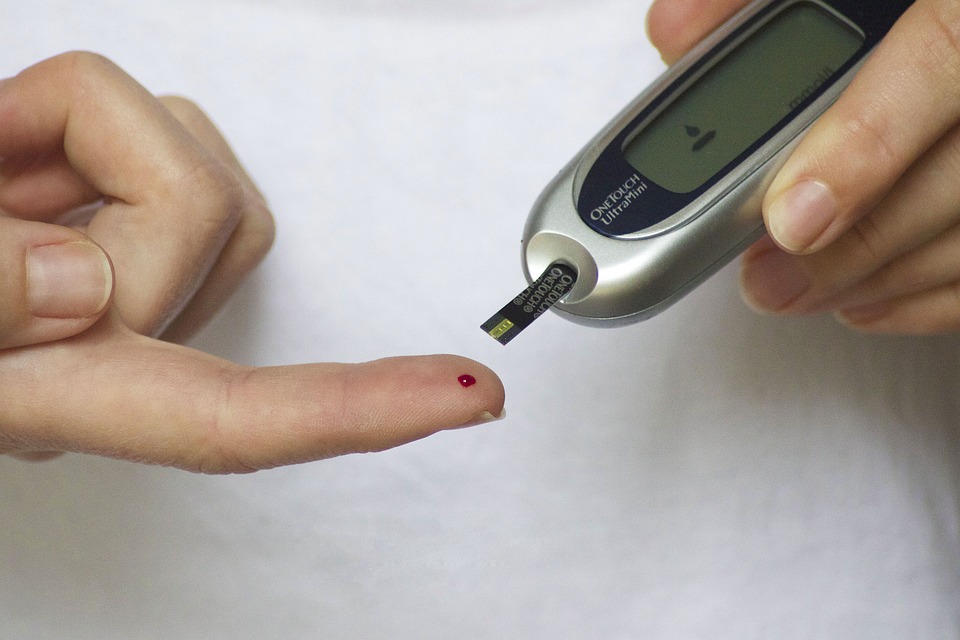
You should prioritize exercise for heart health because it enhances cardiovascular efficiency, lowers disease risks, and strengthens your heart. Regular physical activity reduces blood pressure and improves circulation by up to 25%. Consistent exercise also increases nitric oxide production, promoting flexible blood vessels and reducing arteriosclerosis risks. It helps manage cholesterol by lowering LDL levels and boosting HDL, which is essential for a healthy heart. Exercise aids in maintaining a healthy weight and improves insulin sensitivity, lowering diabetes risk. Engaging in exercise not only protects your heart but also reinforces lifelong heart-healthy habits, encouraging a deeper exploration of benefits.
Lower Blood Pressure Naturally
Focusing on natural methods to lower blood pressure, incorporating regular exercise into your daily routine can greatly benefit your heart health. It’s a powerful form of liberation, freeing you from the shackles of hypertension. Embrace natural remedies through intentional lifestyle modifications like brisk walking or hiking.
Did you know just three 10-minute walks a day can prevent future spikes more effectively than a single 30-minute walk? Combine this with biking or swimming—both accessible and adaptable activities—to further lower blood pressure naturally. Regular physical activity supports memory function, enhances cognitive abilities, and simultaneously nurtures cardiovascular health.
As you initiate this journey, discover the joys of dynamic workouts. Desk treadmilling or pedal pushing subtly integrates movement into your day, breaking the monotony and offering a respite for your heart. Exercise can lower blood pressure by reducing blood vessel stiffness, providing a long-term solution for improved cardiovascular health.
Exercise not only strengthens your heart but also improves blood vessel health by reducing stiffness, so your blood flows freely—a gift to your arteries.
Engage in muscle-building through isometric exercises, a compelling natural remedy to decrease pressure on those arterial walls. Consistency, not intensity, is your ally.
Even if you start slow, the commitment to this lifestyle modification will empower you to reclaim your health, releasing a heart free from the burdens of high blood pressure.
Enhance Heart Rate Efficiency
You’ve got the power to enhance your heart rate efficiency by focusing on strengthening your heart muscle through regular aerobic exercise. This not only improves blood circulation but also boosts your body’s ability to utilize oxygen, making your heart work smarter, not harder. Regular exercise also helps to raise HDL cholesterol levels, which reduces the risk of heart disease by efficiently transporting fat to the liver. By engaging in sustained physical activity, you can significantly lower your risk of developing heart disease.
Strengthen Heart Muscle
A key aspect of enhancing heart rate efficiency involves strengthening the heart muscle. This step is essential for those seeking independence from health constraints. By engaging in heart muscle conditioning, you enable your heart to pump blood more effectively and effortlessly. This translates into an increase in cardiac output—a significant measure of your heart’s efficiency.
When you incorporate aerobic exercise into your routine, it enhances how efficiently your heart pumps and distributes oxygen throughout your body, fending off heart failure and other cardiac issues. Don’t underestimate the power of resistance training, as it plays an integral part in making your heart resilient and effective.
You’ll notice an unmistakable reduction in your resting heart rate. This isn’t just a number; it’s an indication of improved cardiovascular health and reduced risk of heart disease and stroke. Regular physical activity molds your heart into a more potent muscle, lowering the stress it endures each day.
Besides managing heart disease risks, stronger heart muscles improve overall physical performance and endurance. By maintaining key heart health metrics like lower blood pressure and favorable cholesterol levels, you’re investing in a life filled with energy and freedom, liberated from the shackles of heart health worries.
Improve Blood Circulation
Improving blood circulation is crucial for enhancing heart rate efficiency. By embracing regular aerobic exercises like walking and swimming, you boost blood flow by up to 25%. This encourages your blood vessels to expand with ease, increasing their flexibility. Flexibility is essential to stave off arterial plaque prevention, keeping your arteries open and blood pressure manageable. By making your arteries less stiff and narrow, exercise also promotes the production of nitric oxide. This wonder molecule maintains smooth arterial linings, reducing the risks of inflammation and clots that threaten your health.
Exercise Benefits
| Activity Type | Benefit | Impact |
|---|---|---|
| Aerobic Exercises | Increased blood flow | Up to 25% more efficient circulation |
| Resistance Training | Muscle mass improvement | Lowers arterial pressure |
| Physical Activity | Capillary network growth | More oxygen reaches your muscles |
| Regular Exercise | Blood vessel flexibility | Reduced cardiovascular risks |
Engaging in resistance training enhances circulatory efficiency, offering liberation from the hold of arterial aging. It reduces body fat and boosts lean muscle mass, thereby exerting less pressure on your arteries. This physical activity widens your capillary network, ensuring all tissues are well-supplied with oxygen-rich blood, further enhancing heart rate efficiency. Exercise indeed plays an essential role in keeping you free from cardiovascular events like heart attacks and strokes.
Boost Oxygen Utilization
When you focus on boosting oxygen utilization, exercise plays an essential role in elevating your cardiovascular health. By training your body, you increase your peak oxygen consumption, or VO2 max, which is the maximum amount of oxygen your body can use during intense activity. Improving this metric means your muscles can extract oxygen more efficiently from your blood, decreasing the workload on your heart.
This exercise adaptation leads to increased oxygen uptake, enhancing your cardio fitness and aerobic endurance. As you commit to regular exercise, your cardiac output and efficiency improve, not only at rest but also during physical pursuits. This boost guarantees your muscles receive oxygen more efficiently, lowering your heart rate and blood pressure, much like the effects of a beta blocker.
Such improvements translate to better exercise capacity and fewer heart failure symptoms, giving you more freedom to live vibrantly. Exercise further optimizes systemic oxygen extraction, reducing your reliance on anaerobic metabolism. With enhanced adaptations, your body delays fatigue and increases endurance.
Improve Blood Flow and Circulation

Boosting blood flow and circulation is essential for maintaining heart health and overall well-being. When you exercise regularly, you’re not just working your muscles but also enhancing blood vessel elasticity. This means your blood vessels become more responsive and efficient, allowing improved oxygen and nutrient delivery to your muscles and tissues.
Better circulation means waste products are swiftly removed, aiding muscle recovery and reducing soreness. Walking, running, or lifting weights, you’re fortifying these connections and giving your body the liberation it deserves from the shackles of inactivity.
Additionally, engaging in regular strength training can significantly improve your metabolic and vascular health, as it benefits your blood pressure, reduces inflammation, and aids in blood sugar regulation through the preservation of muscle mass.
But your heart isn’t the only organ celebrating this newfound freedom. Aerobic exercise reduces stiffness in blood vessels, particularly those leading to your brain. This increase in cerebral blood flow can improve brain health, potentially slowing memory loss and dementia.
As fitness levels rise, so do these benefits, especially if you’re among those exploring life’s golden years.
Additionally, exercise lowers blood pressure, reducing stress on the heart and arteries. Cardiovascular exercises offer the freedom to create new connections among small vessels, warding off health issues like heart attacks and enhancing your heart’s efficiency.
Enhance Blood Vessel Health
Enhancing your blood vessel health isn’t just a bonus of regular exercise; it’s a transformative benefit. Imagine a life where your endothelial function holds strong, pumping essential nitric oxide to keep your arteries smooth and free from clots. Exercise empowers this process, allowing vascular compliance to thrive. As you embrace this lifestyle change, your blood vessels remain pliable, diminishing the burdens on your heart. Beyond mere maintenance, exercise adaptation fosters blood vessel repair, pushing back against the stiffening dangers of arteriosclerosis. You deserve arterial health that radiates freedom and flexibility. Regular movement amplifies circulation improvement, keeps vascular resistance in check, and revitalizes your system. Consider these liberating effects:
- Raise Nitric Oxide Production: Exercise elevates eNOS expression, leading to relaxed vascular muscles and open, accommodating arteries.
- Boost Vascular Compliance: Aerobic exercises sharpen arterial flexibility, reducing inherent cardiovascular risks and lowering systemic pressures.
- Facilitate Blood Vessel Repair: Exercise catalyzes new blood vessel growth and repair, fortifying the foundation of your circulatory health.
Adding fiber-rich foods like lentils and chickpeas to your diet can complement exercise by promoting heart health. These actions don’t just enhance your life—they transform it, offering an adaptable, resilient network ready to weather life’s storms. Embrace the power and potential within your reach through movement.
Lower Cholesterol Levels

Achieving lower cholesterol levels involves more than just dietary changes—it’s an active, essential process rooted in regular exercise. Exercise benefits you by enhancing cholesterol management through various activities. Brisk walking, jogging, cycling, swimming, and even yoga can all reduce LDL cholesterol and boost HDL cholesterol. Combine them with resistance training for better cholesterol metabolism and lower triglycerides. Moving your body helps not only to feel liberated but also to transform cholesterol for a healthier life. Drinking water before meals can help reduce calorie intake and may also assist in regulating overall cholesterol levels. Aim for 150 minutes of moderate exercise weekly. Consistency is your ally—exercising most days guarantees cholesterol management doesn’t slip away. Don’t feel chained to high-intensity regimes; moderate exercise offers substantial cholesterol benefits, so keep your heart rate uplifted with ease. Pair exercise with lifestyle changes: eat a diet low in bad fats, quit smoking, manage weight, and maintain regular check-ups for best heart health. Remember, exercising regularly is not just about a workout; it’s about setting your heart free.
Reduce Heart Disease Risk
You can greatly reduce your heart disease risk by focusing on improving your cardiovascular efficiency through regular exercise.
Engaging in cardiovascular activities helps maintain healthy cholesterol levels, which is essential for heart health.
Improve Cardiovascular Efficiency
Regular exercise plays a pivotal role in improving cardiovascular efficiency, greatly reducing the risk of heart disease.
Through cardiac remodeling and exercise adaptations, your heart becomes a more formidable engine, capable of pumping blood with less effort and increased efficiency. You’ll experience enhanced cardiac output as your heart enlarges its chambers and strengthens its ability to relax. This means your resting heart rate lowers, offering you a glimpse of freedom from cardiac stress.
Exercise liberates your vessels, enhancing their capacity to handle blood flow. With improved vascular flexibility, your vessels expand, reducing the resistance against which your heart must push. This promotes a natural drop in blood pressure.
As you embrace this active lifestyle, your body will respond by producing more nitric oxide, better facilitating blood flow and preventing blockages.
Now, let’s explore three key benefits of regular exercise for your heart:
- Increased Cardiac Output: Boost your heart’s efficiency, letting it do more with less effort.
- Enhanced Vascular Flexibility: Enjoy improved circulation and reduced blood pressure.
- Lowered Risk of Heart Disease: Decrease risks of coronary heart disease and stroke, improving your overall heart health.
Embrace this pivotal transformation for a healthier, liberated life.
Maintain Healthy Cholesterol Levels
Fostering a heart-healthy lifestyle involves maintaining cholesterol levels within an ideal range to reduce heart disease risk. Embrace the liberation that comes with effective cholesterol management through regular exercise. Engaging in aerobic exercise can elevate your HDL cholesterol by 5 to 8 mg/dL, with moderate-intensity workouts upping HDL-C levels by 6.6%.
Prefer something more intense? High-intensity exercise can enhance HDL-C by an impressive 8.2%. Don’t overlook weight training—especially at higher intensities—since it also boosts HDL cholesterol and contributes to overall heart health.
Balancing your cholesterol means more than just raising the good kind. Regular moderate-intensity exercise is powerful in lowering LDL cholesterol by 7.2% and reducing triglycerides by 30% to 40%. This decrease in harmful cholesterol and fats not only refines your blood profile but actively trims your risk of heart-related complications.
Even better, combining aerobic exercise with resistance training amplifies these benefits—perfect for those seeking to break free from the shackles of heart disease.
Boosting your cholesterol efflux capacity by 13.5% with exercise aids in clearing LDL from your bloodstream, enhancing your overall cardioprotective profile. Liberate yourself with the vibrant heart health you deserve.
Decrease Stroke Incidence

Engaging in regular exercise markedly cuts down the risk of stroke, offering up to a 20% reduction. Imagine the freedom that comes with taking control of your heart health through effective stroke prevention strategies. The exercise benefits extend beyond just reducing stroke risk; they manage blood pressure, improve blood circulation, and strengthen your cardiovascular system.
Here’s how you can transform your life:
- Aerobic Activities: Embrace brisk walking, running, or swimming. These dynamic movements get the blood pumping, reducing the likelihood of blockages.
- Resistance Training: Complement aerobics with resistance workouts. Building muscle enhances heart function and overall cardiovascular health, adding another layer of protection against strokes.
- Mindful Routine Creation: Cultivate a daily exercise practice. Consistency is the key to maintaining long-term heart health and reducing your stroke risk.
The incredible part is how much power you hold in your own hands. By committing to regular physical activity, you’re not just investing in your present; you’re paving the way for a healthier future.
Exercise is liberation—it’s your path to independence from the constraints of potential heart issues. Embrace the importance that comes from an active lifestyle and redefine what’s possible for your health.
Manage Diabetes Effectively
While exercising for heart health already yields numerous benefits, it also plays a pivotal role in managing diabetes effectively. Regular physical activity empowers you by enhancing blood sugar management, reducing your risk of developing type 2 diabetes.
With each brisk walk, run, or swim, you’re not just moving—you’re actively improving your body’s ability to use insulin, mitigating the risks associated with prediabetes and diabetes by up to 29% for women and 21% for men. By embracing aerobic exercises and resistance training, you maximize this effect, crafting a path toward greater freedom from the constraints of diabetes.
Exercise doesn’t stop at blood sugar management; it considerably boosts insulin sensitivity too. When you engage in moderate-intensity activities like cycling or walking, your body’s insulin effectiveness increases, potentially reducing reliance on medication.
Consider adding high-intensity interval training to your routine for a further insulin sensitivity boost. This approach opens doors to maintaining healthy blood glucose levels.
Beyond these benefits, consistent exercise diminishes chronic inflammation, lowering markers such as C-reactive protein. It supports long-term health by reducing the risk of diabetes complications.
You’re not just exercising—you’re liberating yourself from the shackles of diabetes, all while nurturing your heart health.
Maintain a Healthy Weight

When you prioritize regular physical activity, you boost your metabolic efficiency, allowing your body to burn more calories even when you’re resting.
Balancing your caloric intake through a combination of aerobic and resistance exercises is key to effective weight management.
This balance not only helps you maintain a healthy weight but also plays a critical role in protecting your heart health.
Boost Metabolic Efficiency
A consistent exercise routine plays a crucial role in boosting metabolic efficiency, helping you maintain a healthy weight. By fostering metabolic flexibility, exercise enhances your body’s ability to switch between burning fats and carbohydrates, thereby maximizing energy expenditure. This flexibility is key to sustaining a balanced metabolism, which is fundamental for weight management and overall well-being.
When you engage in regular physical activity, you’re not just burning calories—you’re optimizing your entire body’s efficiency.
Consider these liberating benefits of improved metabolic function:
- Endurance Enhancement: Regular activity reshapes your muscles to become more efficient at utilizing oxygen, reducing the burden on your heart and pushing your energy limits. Imagine a life where fatigue no longer holds you back.
- Chronic Condition Control: Stronger muscles and increased stamina from exercise can alleviate symptoms of chronic ailments like arthritis, offering you a chance to reclaim control over your body.
- Cholesterol Control: Exercise positively impacts cholesterol levels by reducing LDL and increasing HDL, protecting your heart and freeing you from the shackles of heart disease risk.
Balance Caloric Intake
Achieving a balance in caloric intake is vital in maintaining a healthy weight, which is essential for heart health. When you pair exercise with mindful dietary choices, you create a powerful synergy that keeps your body from consuming more calories than it uses. This caloric balance is key to preventing weight gain, lowering your blood pressure, and improving your cholesterol levels.
By focusing on maintaining a healthy weight, you’ll markedly reduce your risk of obesity—a major enemy to your heart.
Incorporating exercise into your routine empowers you, granting freedom from potential heart disease by reducing cardiovascular risks. As you engage in regular physical activity, you’re not just controlling your weight; you’re also enhancing your heart’s endurance.
Exercise lifts HDL (good cholesterol) levels and may even lower LDL (bad cholesterol), easing the strain on your heart and arteries. Through intentional dietary choices and commitment to staying active, you liberate yourself from the chains of chronic diseases like type 2 diabetes, another heart risk factor.
Embrace a lifestyle where you prioritize caloric balance. You’ll discover newfound energy and a resilient heart ready to support your most vibrant life.
Encourage Heart-Healthy Habits
At any age, embracing heart-healthy habits can lead to profound benefits for your cardiovascular system. Start by transforming your kitchen into a haven for healthy cooking. Focus on ingredients that lower cholesterol and blood pressure, allowing you to take charge of your heart health while savoring delicious meals.
Practice mindful eating, where each bite becomes a conscious choice, helping you maintain a healthy weight and fueling your body with the right nutrients.
To inspire a liberated lifestyle, consider these heart-smart steps:
- Exercise Regularly: Physical activity, like brisk walking or swimming, strengthens your heart, lowers bad cholesterol, and boosts good cholesterol. It even cuts stress, improving your mood for a holistic sense of freedom.
- Improve Blood Flow: Cardiovascular exercises enhance circulation, reducing blockages and preventing potential heart attacks. Better blood flow supports activity without limits, opening doors to endless possibilities.
- Choose Nutrition Wisely: Good nutrition choices are essential. By prioritizing nutrient-dense foods, you not only manage your weight but also decrease inflammation markers, safeguarding your heart’s future.
Strengthen Heart Muscle Performance

To guarantee your heart stays strong and efficient, it’s important to focus on more than just diet and lifestyle modifications. Embracing fitness routines that enhance heart muscle performance is essential for boosting heart health.
Aerobic activities, like walking, swimming, or cycling, work wonders in fortifying your heart and blood vessels, promoting better oxygen flow, and minimizing blood pressure and cholesterol levels. When you engage in these activities regularly—ideally 30 minutes a day, five days a week—you access significant exercise benefits that go beyond physical health.
Your heart thrives on improved flexibility and endurance; a rigid heart is less efficient. Physical activity, especially if you include interval training in your routine, can reverse heart stiffness.
Transform your heart into a powerhouse by committing to a yearlong exercise plan that reduces heart failure risks through enhanced muscle elasticity and increased oxygen utilization. This dedication doesn’t just bolster heart flexibility, it rewards you with a life of greater freedom and liveliness.
Exercise motivation is key, so start slow and find joy in movement. Your journey toward a healthier, more liberated you begins with every step, pedal, and stroke you take.














